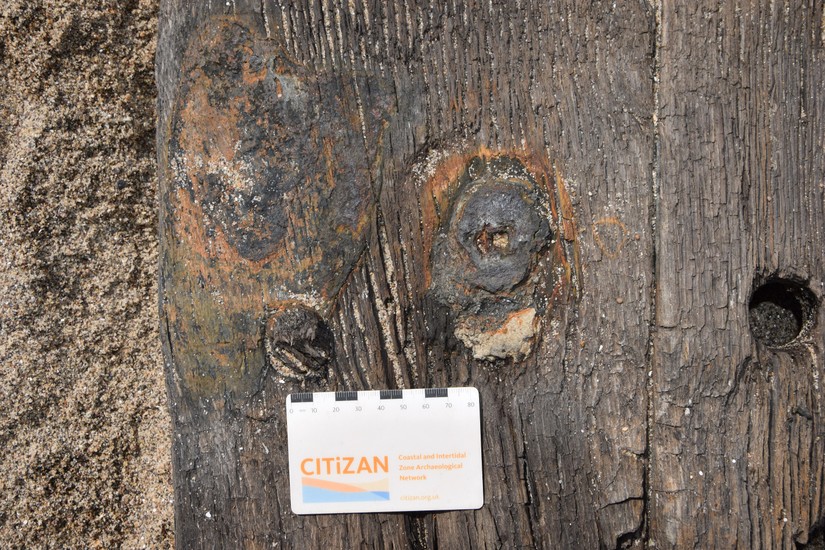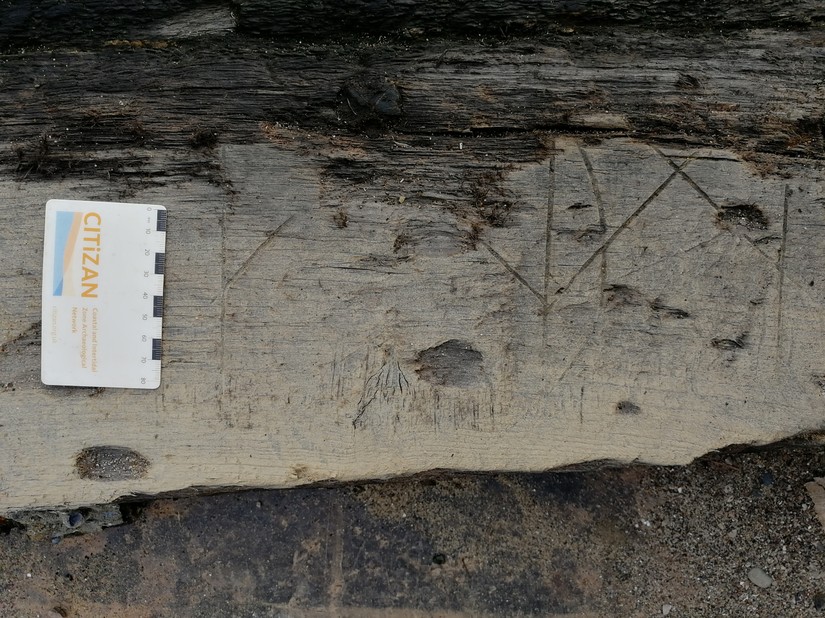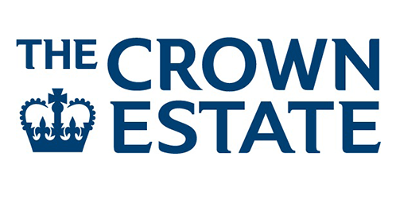Rapid wreck recording on the Lincolnshire coast
21/05/2018 | Jordan Havell (Citizan volunteer)
Jordan and his mum Lianne are two of Citizan’s most enthusiastic and hardworking volunteers in Lincolnshire. They organise the Sutton-on-Sea beach clean and as a result are regularly on the foreshore and always record the archaeological features and finds they encounter. These have ranged from broken pieces of prehistoric peatshelf and submerged forest to 19th century Dutch plates and ships timbers. As well as volunteering for Citizan Jordan has also written several entries for Historic England’s ‘Wreck of the Week’ blog, including this one on the history of the hulked vessel Acorn.
The following is the story of one of the bigger pieces of wreck that Jordan and Lianne have identified.
Andy
On Tuesday (May 1st) a friend of mum's stopped us in Sutton-on-Sea high street to tell us about a large piece of wood that was spotted on the beach and showed us some photos they had taken of it. We realized at that point exactly what it could be and decided to cycle down to the beach to check it out. The weather was a bit mixed being half sun/half cloud (and a few drops of rain mixed in.)

Upon arrival at the beach we saw that the piece of wreck was a lot bigger than we first thought. We then spent the next 30 minutes taking photos and rough measurements. The first thing I noticed about the wreck was the amount of treenails in it, along with some ironwork and concretion. The remains measured roughly 1.96m wide and 1.72m long and was made up of five ribs and four planks, making part of the hull.

At that point we knew there was every chance that it could be an important piece of wreck as we had previous training with Citizan and MOLA.
We returned home to download and check the photos we had taken. We then notified Adam Daubney (Lincolnshire’s Finds Liaison with the Portable Antiquities Scheme), Andy Sherman and Nick Mason at Citizan and also Serena Cant at Historic England.
Adam came over to the site that same afternoon and took lots more photos as well making a measured plan of the remains, which he digitalized.

We were then notified by Nick Mason that he was planning on making a visit to the site two days later (May 3rd) and he asked us if we wanted to join him. We met Nick and Hanna on the beach and spent most of the afternoon making detailed notes on the size of each timber and taking pictures for a photogrammetry model and possible publication. It was a nice warm day on the beach.

As the beach nourishment was scheduled to start soon some unscheduled help was offered by the workmen from Van Oord. (Part of the team helping to keep flooding at bay on the Lincolnshire coast by replacing sand lost from the beach during winter storms. Andy.) The workmen from Van Oord kindly lifted the wreck remains from the beach with one of their diggers and drove it to a safe location. We then went home and Nick and Hanna went with the wreck to take a few more photos and take some samples for Historic England to do some dating.

The Van Oord workmen then helped Nick and Hanna to turn the remains over and when they did they saw some carvings on the outside of the hull planks. Nick’s colleagues in London think that they may be shipwright’s marks, to do with building the boat or a signature from one of the carpenters.

We look forward to hearing more about this great wreck as we had been so involved in recording it. Jordan.
The samples taken during the recording of these remains are currently being assessed by Historic England for their suitability to be dated. The remains will be reported to the Reciever of Wreck.
Citizan would like to thank Adam Daubney of the Portable Antiquities Scheme, Hanna Jansson, Serena Cant and Cathy Tyers of Historic England for their help with this wreck. We would also like to thank the staff at Van Oord for going out of their way to help us recover the remains and temporarily storing them for us.








